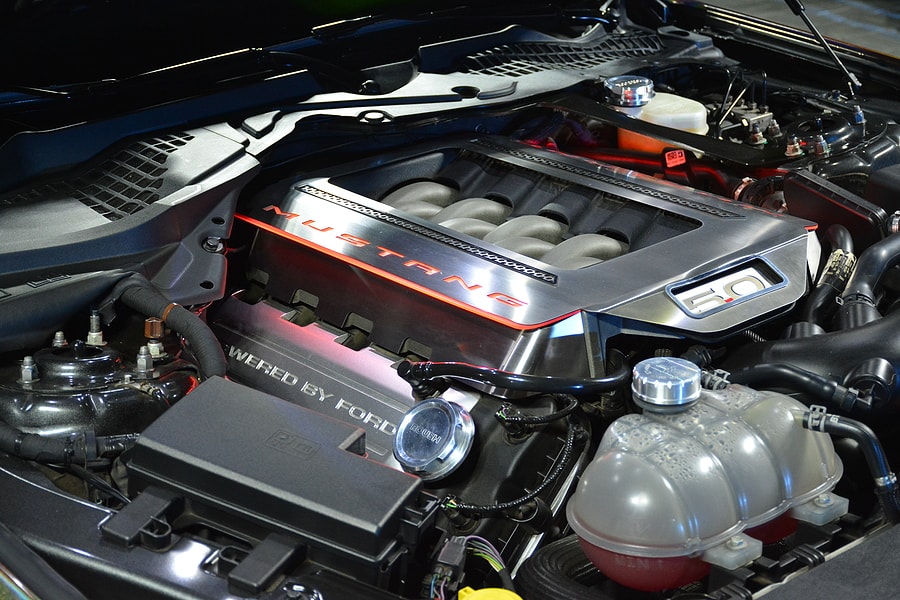Whether it’s a beautiful, brand-new Ford Ranger, or a gently used car, a maintenance schedule, by mileage or time, should be used to keep it in top shape for the years to come. Even if nothing goes “wrong” while driving, a car will still need regular tune-ups and checks, from changing the oil to replacing the timing belt. Find out what you should be checking and how often with our very simple guide to Ford maintenance.

An Overview of Ford Maintenance
Every Ford model is going to feature its own specific maintenance schedule: you can find your exact schedule on Ford’s official website. An F-150’s schedule may differ a great deal from an Explorer’s, for instance, and each vehicle will have very specific needs that need to be checked. If you want to keep your car running smoothly for more than 150,000 miles, you’ll want to keep up with your vehicle’s specific needs listed in your driver’s manual.
On the other hand, there are some things that most Ford vehicles have in common, and this very basic overview can serve as a reminder of how often you’ll need regular maintenance.
Ford Maintenance Schedule by Mileage
Every 5,000 Miles
- Oil Changes: The maximum oil change interval should be either every six months or 5,000 miles. For those cars under special operating conditions, the interval should be every 3,000 miles or every three months.
- Inspect Tires: Tires typically experience wear and tear around this time. If the tires have worn tread, for example, they should be replaced around this time.
- Rotate Tires: Tires need to be rotated to ensure that the wear is happening evenly.
- Diesel Vehicles: The air filter minder should be checked, and the filter should be replaced.
Every 15,000 Miles
- Inspect Automatic Transmission Fluid Level: Taking care of your transmission can ensure the longer lifespan of the vehicle.
- Inspect Brake System: At the point, the pads, rotors, brake lines, drums, hoses and shoes should be inspected, as well as the parking brake.
- Inspect the Steering System: The suspension, driveshaft, ball joints and steering linkage should be checked as a part of the normal Ford service schedule.
- Inspect the Wheel Ends: This needs to be checked for unusual noises.
- Inspect Engine Cooling System: The hoses, radiator, water pump and overall cooling system needs to be checked.
- Replace the Fuel Filter for Diesel: This needs to be done for diesel cars only.
- Inspect the Cabin Air Filter: Don’t breathe in dirty air! Change your air filter often.
- Lubricate/Inspect 4X2 Ball Joints: This needs to be done on pickup trucks except for the F-450 and F-550.
- Lubricate/Inspect Steering Linkage: This also needs to be done on trucks.
At 30,000 Miles
- Replace Climate-Controlled Seat Filters: This needs to be done on certain models.
At 100,000 Miles
- Replace Spark Plugs: Your engine spark plugs should be replaced as a part of the normal Ford maintenance plan.
- Change Yellow Coolant: Ford uses yellow and orange coolant, which needs to be replaced.
- Replace PCV: The PCV valve needs to be replaced at this point.
- Inspect Accessory Drive Belts: Change your drive belts or v-belt.
- Replace Camshaft Belt: This needs to be done on 2.0 liter, 4-cylinder engines.
At 150,000 Miles
- Inspect Exhaust System and Heat Shields: The exhaust system may experience wear-and-tear from rust at this point.
- Change Rear Axle Lubricant: This needs to be done on all rear-wheel-drive cars.
- Replace the Timing Belt: The timing belt needs to be replaced if not sooner.
- Change Front Axle Lubricant: This needs to be done on most cars.
When to Come In
Besides this list of regular maintenance needs, consider the following:
- Note that your vehicle’s model will have its own specific recommended maintenance schedule.
- You should come in whenever your car is exhibiting unusual sounds, vibrations, jolts, grinding sensations or smells.
- You should observe the lights on your dashboard, such as the check engine light. Newer vehicles tend to have reminder systems and alerts, which should not be ignored.
- Extreme heat, extreme cold, heavy loads and driving behavior can all affect the number of miles between service. In other words, you may need to come in more often.
If any of these situations apply, come to a Ford dealer to check on your vehicle. Those in West Memphis, AR, asking themselves, “Where is there a Ford service center near me?” should connect with our services department and schedule an appointment online.



